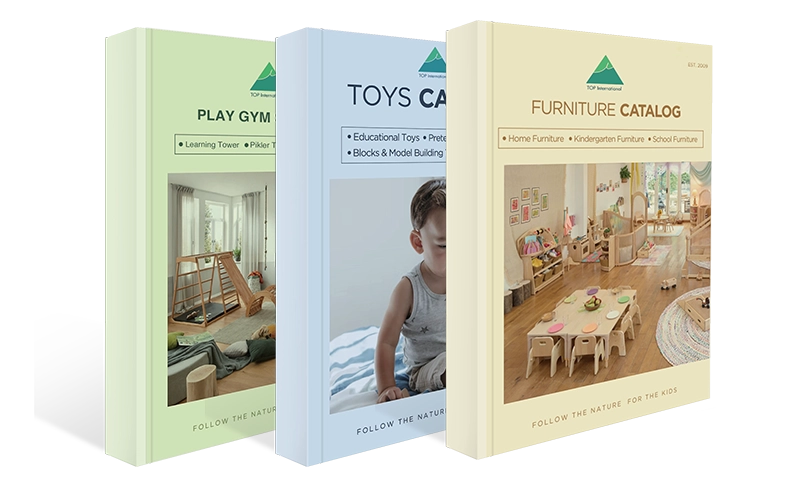Are you looking for ways to help your preschooler develop more potent physical and cognitive abilities? Perceptual motor skills are crucial for your child’s growth. They play a significant role in developing basic and complex skills for academic success and daily life. Are you wondering why your preschooler struggles with balance, coordination, or simple daily tasks? Do they have trouble sitting still, holding a pencil, or following instructions?
Improving perceptual motor skills can solve these challenges by enhancing physical coordination, sharpening focus, and supporting early learning development. These skills help children gain independence, perform better academically, and interact more confidently with their environment. When nurtured early, these abilities can prevent learning delays, reduce frustration, and promote a more enjoyable, successful preschool experience.
まさにその通りです!知覚と運動能力は幼児期の発達に不可欠です。身体的な動作、認知能力の発達、そして社会的な交流に不可欠です。これらのスキルを習得することで、未就学児は学業面や情緒面の経験を形作る様々な活動に取り組むことができるようになります。
1. What Are Perceptual Motor Skills?
Perceptual motor skills involve receiving, interpreting, and responding to sensory information through coordinated physical movements. These skills integrate sensory inputs—such as sight, sound, and touch—with motor output, including walking, catching, writing, or balancing. These skills are essential for preschoolers, forming the foundation for academic learning, social interaction, and everyday independence.
When children see a ball approaching them and instinctively raise their hands to catch it, they use perceptual and motor skills. Their eyes process the speed and direction of the ball, and their brain coordinates the appropriate muscular response. This synchronization of senses and movement is critical for physical activities and tasks like reading, where visual motor perceptual skills help track words across a page, or writing, which relies heavily on fine motor skills and visual guidance.
These skills evolve naturally through play and exploration, but can also be supported through intentional activities. Games that involve balance, hand-eye coordination, or spatial awareness, such as puzzles, obstacle courses, or ball games, are excellent perceptual motor skills activities. Strengthening these skills early helps children improve focus, build confidence, and adapt more easily to structured learning environments. Putting, understanding, and nurturing perceptual motor skills equips preschoolers with tools for lifelong success in both physical and academic pursuits.
2. The Science Behind Perceptual Motor Skills
Perceptual motor skills are not simply about physical movement. They represent a highly intricate network of neural processes, brain structures, and sensory feedback loops that shape a child’s ability to interact with their environment. These skills allow children to move purposefully, learn from movement, and adapt to physical challenges.
Understanding the neurological foundation of perceptual motor development is critical to early childhood education, therapeutic intervention, and informed parenting. Research has shown that the human brain undergoes substantial structural and functional changes during preschool. These changes are particularly pronounced in motor control, balance, and sensory integration.
Below, we explore the three most influential brain regions involved in developing perceptual motor skills: the cerebellum, the motor cortex, and the sensory cortex.
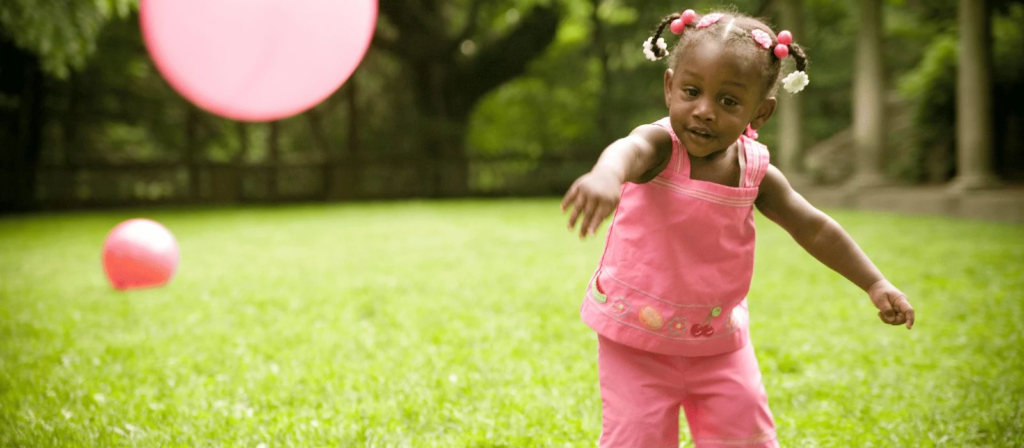
2.1 Cerebellum
The cerebellum, located at the base of the brain, plays a central role in motor control. While it does not initiate movement, it is crucial for coordination, precision, and accurate timing. The cerebellum receives information from the sensory systems, the spinal cord, and other brain parts, and integrates these inputs to fine-tune motor activity.
In preschoolers, the cerebellum supports:
- Balance and Posture: It helps children maintain equilibrium as they move, whether jumping, running, or sitting still. This is especially crucial in hopping on one foot or walking a balance beam, where even minor miscalculations can lead to falls or stumbles.
- Motor Learning: It plays a vital role in learning new movements. When a child first attempts to use scissors or knows how to throw a ball, the cerebellum adjusts their motor patterns with repeated practice, gradually leading to more fluid, efficient movements.
- Predictive Timing: The cerebellum helps children anticipate the timing of moving objects, such as catching a ball or jumping rope.
Developmental delays or underdevelopment in the cerebellum can result in clumsy movements, difficulty with rhythm, and problems with coordination. Children with these challenges may appear awkward or avoid physical activities due to fear of failure or embarrassment.
2.2 Motor Cortex
The motor cortex generates voluntary motor movements, particularly the primary motor cortex. Located in the frontal lobe, it sends signals to the body’s muscles, allowing a child to move intentionally.
For young children, the motor cortex is actively involved in:
- Initiating Movement: Whether a child raises their hand, throws a ball, or claps to music, the motor cortex is firing neural impulses to specific muscles, making those actions possible.
- Gross and Fine Motor Control: Larger body movements such as running or jumping rely on the gross motor areas, while intricate actions like buttoning a shirt or drawing require fine motor control, governed by different regions within the motor cortex.
- Skill Refinement: As children practice physical tasks, the motor cortex refines its control over muscles, improving precision. For example, early attempts at writing may be shaky, but with repetition, the motor cortex strengthens its neural pathways for smoother control.
This region is particularly plastic in early childhood, meaning it can adapt and change quickly in response to learning and environmental input. This neuroplasticity underscores the importance of providing diverse and repeated movement experiences during preschool.
2.3 Sensory Cortex
The sensory cortex, especially the somatosensory area in the parietal lobe, processes sensory information such as touch, temperature, pressure, and proprioception (the sense of body position).
In the context of perceptual motor skills, the sensory cortex:
- Translates Sensory Input into Action: When a child feels the texture of a puzzle piece or the weight of a ball, the sensory cortex interprets that data, allowing the brain to adjust motor output accordingly.
- Supports Proprioception: This internal sense helps a child know where their limbs are in space without looking. For example, reaching for a cup without knocking it over depends on accurate proprioceptive input and response.
- Enables Tactile Discrimination: Differentiating between surfaces, textures, or temperatures helps children interact safely and effectively with their environments.
Children with sensory processing issues may receive distorted information from their environment, leading to over- or under-reactions. A light touch may feel like a poke, or they may seem unaware when they bump into something. These inconsistencies can affect their confidence, self-regulating ability, and overall development.

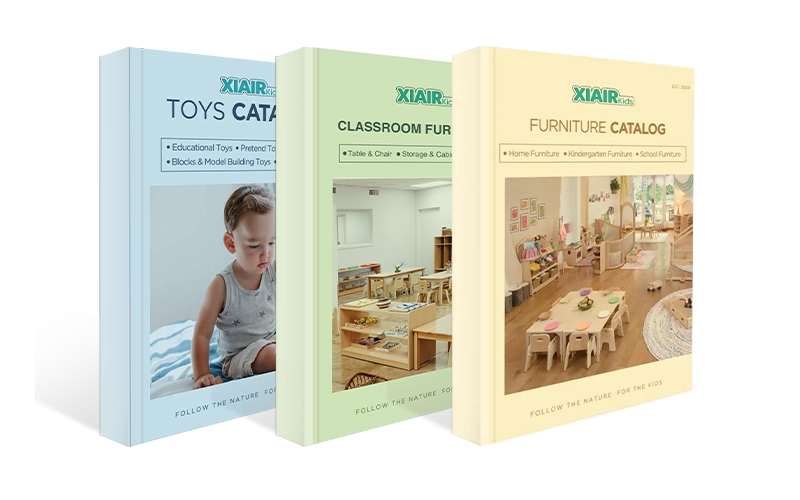
Receive a free catalog and custom layout to help you design your ideal classroom easily.
3. Why Is Perceptual Motor Skills Development Important?
Developing perceptual motor skills is vital for preschoolers because it lays the foundation for physical coordination, academic readiness, and social interaction. These skills help children process sensory information and translate it into purposeful movement, like writing, balancing, or following directions. Strong perceptual and motor skills enhance focus, boost confidence, and support independence in daily tasks. Children may struggle with learning, behavior, and basic motor functions without them. Early development ensures smoother transitions into structured learning environments and sets the stage for long-term success.
3.1 Types of Perceptual and Motor Skills
- 粗大運動能力これらの動きは大きな筋肉群を必要とし、子どもの歩行、ジャンプ、バランス運動に役立ちます。粗大運動能力は身体発達の基礎となります。
- 細かい運動能力微細運動能力とは、小さな物を拾い上げる、色を塗る、鉛筆を持つなど、手や指を使ったより小さく、より正確な動きのことです。
Both motor and perceptual skills work together in everyday tasks. For example, when a child is running and catching a ball, they use visual motor perceptual and motor skills to complete the task. This is why preschoolers must practice both skills to support their development.

3.2 Foundation for Learning and Development
子どもが知覚運動能力を発達させるにつれて、将来の学業や社会生活での成功の基盤が築かれます。運動能力と知覚能力は、未就学児が集中力、情報の保持、そして周囲の世界への理解を深めるのに役立ちます。例えば、書くには以下の要素が組み合わさる必要があります。 visual motor coordination 知覚能力と細かい運動能力が優れている子どもは 運動能力 鉛筆の扱いが上手になり、文字や数字の書き方が理解できるようになります。
これらのスキルは、問題を解決する能力、指示に従う能力、集中力を必要とするタスクに取り組む能力にも貢献し、これらはすべて学業の成功に不可欠です。
3.3 Active and Independent Living
優れた運動知覚能力を発達させた未就学児は、日常の作業をより自立して行うことができるようになります。服を着る、歯を磨く、食事をするといった単純な動作でも、感覚知覚運動能力と運動協調性が求められます。子どもがこれらの動作を習得すると、自信と自立心が芽生え、それは情緒面の健康にとって非常に重要です。
こうした日常の課題を自立してこなすことで、子どもたちの自尊心も高まり、成長するにつれてより複雑な責任を負う準備も整います。

3.4 Brain Function and Skill Development
Engaging in activities that enhance perceptual motor skills can have a lasting impact on brain development. The brain constantly processes sensory input and directs motor actions, which strengthens neural connections and helps the brain grow. Activities that challenge a preschooler’s perceptual and motor skills lead to improved attention, memory, and problem-solving abilities.
さらに、視覚運動能力と視覚知覚能力を発達させることで、学業の学習に必要な読解力、空間認識力、細部への注意力などの認知機能が向上します。
3.5 Complex Task Practice
知覚運動能力は、子どもたちが将来直面するより複雑な課題の練習場としても役立ちます。バランスを取る、描く、はさみを使うといった知覚運動能力を早期に練習することで、より難しい課題に必要な協調性を身につけることができます。知覚運動能力と運動概念を練習している未就学児は、将来、体系的な学校活動やスポーツにスムーズに移行することができます。
これらの基本的なスキルを習得すると、子供たちは新しいタスクを学ぶことも容易になります。 Once children have developed the basic motor and perceptual skills needed for physical activities, they can move on to mastering other, より複雑なスキル。
3.6 Everyday Activities
自転車に乗る、服を着る、積み木を積むといった日常の活動は、知覚運動能力に依存しています。これらの能力は、周囲の世界で機能するために不可欠です。例えば、片足でバランスをとったり、縄跳びをしたりするといった知覚運動能力は、未就学児の身体協調性と空間認識能力を養うのに役立ちます。
未就学児がこれらの活動を実践することで、運動能力が向上し、自信と自立心が育まれます。知覚運動能力と運動概念は、日常生活を送る上で基礎となります。
3.7 Perception and Motor Skills
知覚と運動能力のつながりは、未就学児の全体的な発達にとって非常に重要です。感覚知覚運動能力は、子どもたちが感覚を用いて身体動作を誘導することを可能にします。感覚入力の処理に困難を抱える子どもは、協調運動や身体動作に課題を抱える可能性があります。
Children can improve their sensory processing abilities and motor coordination by engaging in activities that strengthen this connection, such as fun activities for perceptual motor skills or examples of perceptual motor skills involving visual tracking or tactile play.

3.8 Participate in Group Play
Group play is a cornerstone of preschool education. Children learn to take turns, cooperate, and navigate social cues through movement-based activities. Playing tag, building a fort, or dancing to music involves perceptual motor engagement.
A child with well-developed perceptual motor skills can:
- Move confidently among peers without frequent collisions or hesitation.
- Read body language and anticipate the movements of others.
- Maintain spatial awareness while respecting personal space boundaries.
Children who struggle in this area may avoid physical play, become easily overwhelmed, or appear clumsy or socially withdrawn. This can lead to exclusion from peer interactions and missed opportunities to develop essential interpersonal skills.
In contrast, strong perceptual motor abilities help children:
- Engage fully in cooperative tasks like passing a ball or forming a circle.
- Adapt their physical responses to match the intensity of group activity.
- Feel more competent, increasing their desire to participate.
When preschoolers experience success in group play, it fosters not only motor development but also self-esteem, social bonding, and emotional regulation.
3.9 Follow Multi-Step Instructions
Preschoolers are often required to follow instructions involving cognitive processing and motor responses. For example, when a teacher says, “Pick up your crayons, walk to the bin, and place them inside,” the child must integrate auditory input with memory, spatial awareness, and body movement.
Perceptual motor skills are at the core of this integration. The child needs to:
- Hear and process each component of the command.
- Understand spatial terms such as “behind,” “under,” or “next to.”
- Execute fine and gross motor actions in the correct sequence.
Children with underdeveloped skills may lose track of steps, move inefficiently, or misinterpret directions. This can frustrate both the child and the adult and may lead to behavioral issues or a false perception of inattentiveness.
On the other hand, children with refined perceptual motor abilities can:
- Navigate sequences of tasks with greater ease.
- Coordinate their actions more efficiently.
- Develop a sense of independence in responding to classroom routines.
This skill is particularly critical as children transition into kindergarten, where classroom expectations become increasingly complex.

3.10 Transition Between Activities Smoothly
Transitions—shifting from one task or setting to another—are daily events in 幼稚園の教室. Whether moving from outdoor play to circle time or changing from a block-building activity to lunch, transitions require children to shift attention, change body orientation, and regulate their physical actions.
Perceptual motor skills support smooth transitions by helping the child:
- Sense changes in the environment through visual and auditory cues.
- Adjust body posture and movement direction without stumbling or crashing.
- Understand spatial organization to find where they’re supposed to go next quickly.
Without these abilities, transitions can feel chaotic. A child may bump into others, struggle to navigate around furniture, or become overwhelmed by the shift in sensory stimuli. Such struggles often result in meltdowns, delays, or resistance to change.
However, when perceptual motor skills are intact, transitions become opportunities for independence. Children learn to:
- Follow movement-based routines with minimal prompting.
- Regulate their body in dynamic settings.
- Adapt to shifting demands with flexibility and confidence.
Effective transitions help create a rhythm to the day that is predictable and calming, both for children and their caregivers.
3.11 Develop Handwriting Readiness
Handwriting is a complex skill that demands much more than the ability to hold a pencil. It requires fine motor precision, visual-motor coordination, postural control, and spatial awareness—all components of perceptual motor development.
Preschoolers with strong perceptual motor foundations are better prepared to:
- Use appropriate grip and pressure when writing or drawing.
- Align letters on a page with consistent spacing.
- Coordinate hand and eye movements for letter formation and tracking.
Children who lack these skills may struggle with pencil control, fatigue quickly during writing tasks, or develop poor habits that become difficult to correct later. They may also avoid drawing or writing altogether, leading to academic challenges.
By contrast, early development of perceptual motor skills promotes:
- Confidence in mark-making and early literacy activities.
- Efficient motor patterns that support neat and legible writing.
- A sense of pride and ownership over their work.
Supporting handwriting readiness through perceptual motor development helps children meet academic benchmarks and enjoy learning to write.
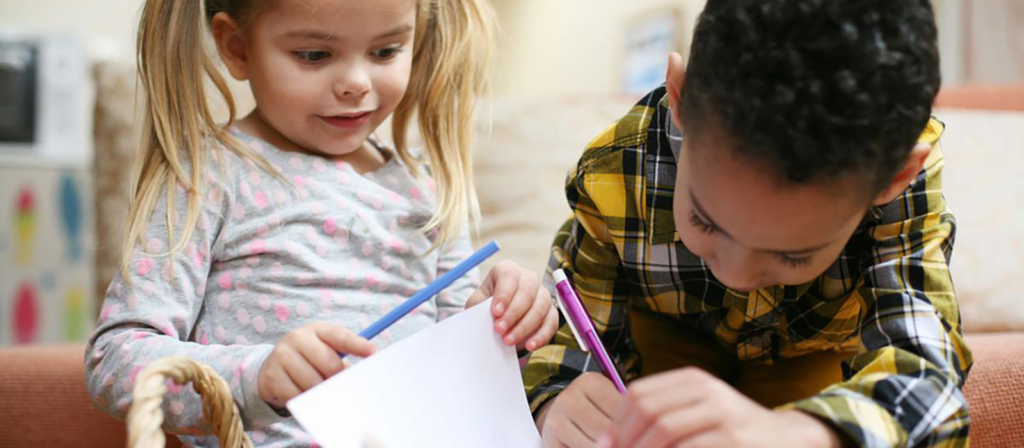
3.12 Navigate Physical Environments Safely
A preschooler’s day includes navigating hallways, climbing playground structures, stepping over objects, and exploring new spaces. Each of these actions depends on perceptual motor abilities.
For safe navigation, children need to:
- Judge distances and avoid obstacles.
- Adjust speed and direction based on terrain or surroundings.
- Maintain balance and orientation in dynamic environments.
When perceptual motor skills are weak, children may appear clumsy, have frequent accidents, or show anxiety in new settings. These issues can lead to reduced physical activity, increased adult intervention, and heightened frustration.
In contrast, children with strong skills can:
- Move through varied environments with independence and safety.
- Participate more fully in physical education and outdoor play.
- Gain physical confidence that transfers into other areas of learning.
Exploring environments safely also encourages curiosity, risk-taking, and a love of movement—all critical elements of holistic development.

Receive a free catalog and custom layout to help you design your ideal classroom easily.
4. How to Encourage Perceptual Motor Skill Development in Preschoolers?
知覚運動能力の発達は、構造化された活動と非構造化された活動の両方を通してサポートできます。未就学児のこれらの能力を育む方法をいくつかご紹介します。
4.1 Perceptual Motor Skills Program
A structured perceptual motor skills program can give preschoolers the necessary activities and exercises to strengthen their coordination. These programs often include gross and fine motor exercises and can be adapted based on the child’s developmental level.
4.2 Perceptual Motor Skills Activities
楽しく魅力的なアクティビティを取り入れる 日々の習慣に取り入れることは、発達をサポートする素晴らしい方法です。例えば、次のような簡単な活動を取り入れましょう。
- 球技 (粗大運動能力のため)
- パズルとお絵かき (細かい運動能力のために)
- 障害物コース (調整用)
These perceptual motor skills activities build physical strength and coordination and enhance cognitive skills, such as problem-solving and memory.
4.3 Fun Activities for Perceptual Motor Skills
運動知覚能力の発達を楽しくしましょう!ダンス、トランポリンでのジャンプ、インタラクティブなゲームなどのアクティビティは、子どもたちが楽しく過ごせるようになります。 運動 while developing critical coordination and sensory skills. The more fun they have, the more likely they will engage with these activities and develop stronger skills over time.
5. Examples of Perceptual Motor Skills Activities for Preschoolers
知覚運動能力は、未就学児にとって、身体協調性、認知能力、そして情緒発達の基礎となるため、極めて重要です。様々な知覚運動能力活動に取り組むことで、未就学児は感覚情報を処理し、協調性のある身体動作で反応する能力を身につけることができます。これらの活動は、基本的なバランス感覚から高度な空間認識能力まで、幅広いスキルを網羅しています。
What examples of perceptual motor skills activities can be integrated into a preschooler’s routine?
知覚運動能力の発達を促す活動は、粗大運動、微細運動、身体感覚など、いくつかのカテゴリーに分けられます。以下では、これらのカテゴリーをまとめ、未就学児の協調性と認知能力の育成に役立つ各活動の実践例をご紹介します。
5.1 Gross Motor Activities
粗大運動は、大きな筋肉群に重点を置き、走る、跳ぶ、登るといった大きな動きを身につけるのに役立ちます。これらの活動は、筋力、協調性、バランス感覚の発達を促します。
粗大運動活動の例
- ランニングレース子どもたちに屋内でも屋外でも短い距離を走らせましょう。ちょっとした坂を上ったり、コーンを回ったりするなど、地形を変えて変化をつけましょう。
- ジャンピングジャック: ジャンピング ジャックは、脚と腕の協調性を養うのに最適な方法であるだけでなく、心臓血管の健康と運動協調性の向上にも役立ちます。
- ボールを蹴る子どもたちがボールを蹴って特定の場所に当てたり、「ゴール」を決めたりできるターゲットやチャレンジを用意しましょう。これは、目と足の協調性を鍛えながら、脚の筋肉を強化するのに役立ちます。
- ホッピング地面に四角形や円を描いて、ピョンピョン跳ねるゲームを作りましょう。子どもたちは四角形から四角形へと飛び移り、脚力とバランス感覚を養います。
これらの粗大運動は、歩く、走る、跳ぶといった身体動作に必要な筋力と協調性を養うのに役立ちます。また、これらの活動は感覚処理能力を高め、将来の学業や身体能力の鍵となります。

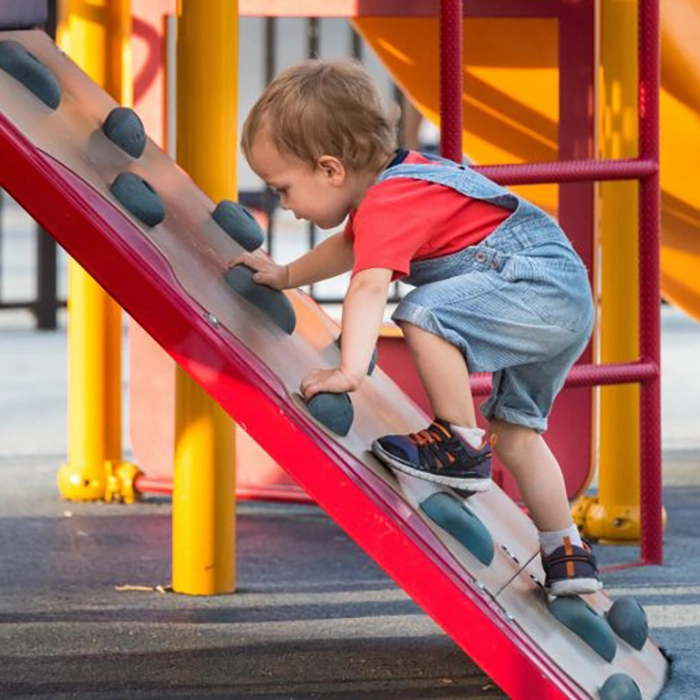
5.2 Fine Motor Activities
Fine motor activities target the smaller muscles in the hands and fingers, which are vital for writing, drawing, and eating tasks. These activities require precision and control, helping children improve their dexterity and hand-eye coordination.
微細運動活動の例
- 描画と着色: Provide your child with crayons, markers, and coloring books to help develop visual motor perceptual skills. As they draw shapes, they practice hand control and eye-hand coordination.
- ブロックで構築するブロックを積み上げたり、簡単な構造物を組み立てたりするような活動は、子どもたちの視覚知覚能力を練習し、手の協調性を強化するのに役立ちます。
- はさみの使い方安全はさみを使って紙を切る練習をさせましょう。直線や形を切ることは、細かい運動能力と集中力を養うのに役立ちます。
- ビーズやレースビーズを紐に通したり、カードの穴に通したりすることは、手と目の協調性と細かい運動能力を向上させるための優れたアクティビティです。
これらの活動は、幼児期の学習において重要な要素である微細運動能力の発達を促します。未就学児は知覚運動能力を発達させるにつれて、書くことや道具を使うことなど、より複雑な動作を行う能力が向上します。

Receive a free catalog and custom layout to help you design your ideal classroom easily.
5.3 Body Awareness Activities
身体意識とは、身体が空間内でどのように動き、様々な部位がどのように協調するかを理解することです。これらの活動は、未就学児が自分の身体への意識を育み、それをコントロールする方法を学ぶのに役立ちます。
身体意識を高める活動の例
- サイモン・セズこの定番ゲームは、身体感覚を育むのに最適です。子どもたちは特定の体の動きを追うことで、自分の行動をコントロールする能力を身につけ、空間における体の機能を理解することができます。
- 動物の散歩カエルのように跳ねたり、ヘビのように滑ったり、ペンギンのようによちよち歩いたりなど、様々な動物のように動くように子どもたちに指示しましょう。これらの活動は、運動協調性と身体感覚の両方を高めます。
- 子どものためのヨガ「ツリー」や「ダウンドッグ」などの簡単なポーズは、子どもたちが自分の体の動きを理解し、柔軟性、バランス、コントロールを強化するのに役立ちます。
- 風船投げ風船を地面に触れないようにしながら空中に投げることは、子どもたちが外部の物体に応じて体を動かす方法を学ぶのに役立ちます。
これらの身体感覚を研ぎ澄ます活動は、動きを制御し、協調性を向上させるための基礎となります。空間内で身体をどのように動かすかを理解することで、子どもたちは運動能力と身体への自信を育むことができます。
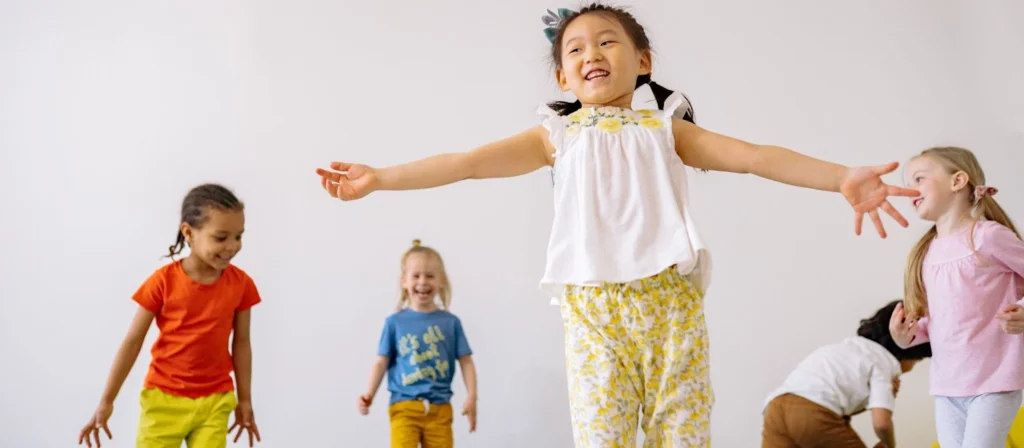
5.4 Spatial Awareness Activities
空間認識とは、物体や人が空間内でどのように相互に関連しているかを理解することです。空間認識力を育むことは、幼児にとって非常に重要です。それは、読解や算数といった将来の学力の基礎を築くことになるからです。
空間認識活動の例
- 障害物コース: Create an obstacle course with various objects that children need to navigate. Children practice spatial awareness by understanding the distance between themselves and objects as they weave through cones, crawl under tables, or jump over pillows.
- 宝探し手がかりを頼りに隠された物を探す宝探しゲームを企画しましょう。このようなゲームは、子どもたちが周囲の環境を探索することで空間認識力を養うのに役立ちます。
- ボックスナビゲーション:子どもが這ったり、登ったり、回り込んだりできる大きな箱を使いましょう。これは、子どもが空間における自分の体の位置を認識し、物理的な空間を移動する能力を向上させるのに役立ちます。
空間認識は、知覚運動能力の重要な要素です。子どもたちが周囲の環境をどのように移動するかを理解し、より複雑な課題に取り組む能力を高めるのに役立ちます。
5.5 Directional Awareness Activities
Directional awareness is understanding left, right, up, down, forward, and backward directions. These skills are essential for following instructions and coordinating physical movements.
方向認識活動の例
- 指示に従う「左にジャンプして」「頭の上で手を叩いて」「右に歩いて」など、子どもたちに簡単な方向指示を与えます。これらの練習は、子どもたちが指示を聞いて従う練習をすると同時に、知覚運動能力を発達させるのに役立ちます。
- 石けり遊び石けり遊びをすることで、子どもたちは「前にジャンプする」「向きを変える」「右に進む」などの方向指示を理解して従うことができます。
- ダンスの動き: 子どもたちがあなたのダンスの動きを真似したり、左に曲がったり、かがんだり、前に出たりといった方向性のある動きをしたりするゲームをします。
方向を認識するアクティビティは、子供が指示に従うスキルを身につけ、後でより複雑なタスクに取り組むのに役立ちます。
5.6 Integration Activities
Integration activities are a fantastic way to combine multiple perceptual motor skills in a single task. These activities challenge preschoolers to coordinate fine and gross motor movements while integrating sensory input. By practicing these activities, children strengthen their ability to perform complex tasks that require various skills, working together.
統合活動の例
- バルーンバレーボール風船を使って簡単なバレーボールゲームをしましょう。子どもたちは指定されたエリア内で風船を繰り返し打ち返さなければなりません。このアクティビティは、子どもたちが風船の動きを追って動きを調整し、両手を使ってコントロールされたボールを打つことで、視覚と運動感覚を養います。
- ブロックで塔を建てる子どもたちに積み木を使って高い塔を作らせましょう。積み木を積み上げることで、細かい運動能力と粗大運動能力を鍛えることができます。積み木を一つ一つ丁寧に配置し、持ち上げたりバランスを取ったりする身体動作も必要です。このアクティビティでは、積み木がどこに収まるかを判断することで、空間認識能力も鍛えられます。
- 複数の課題を備えた障害物コース:這ったり、ジャンプしたり、バランスを取ったり、物を拾ったりする障害物コースを用意しましょう。クッションを飛び越えたり、コーンの間を縫うように進んだり、テーブルの下をくぐったりするなど、様々な動作が求められます。このようなコースは、ジャンプや這いずりといった粗大運動能力と、物を拾うといった微細運動能力を鍛え、感覚処理と身体動作を統合します。
統合活動は、子どもたちが即座に考え、様々な感覚刺激に応じて動きを適応させる必要があるため、非常に効果的です。子どもたちはこれらの課題に取り組むことで、感覚情報と身体動作を組み合わせる練習をし、最終的には全体的な協調性と運動発達を促進します。


5.7 Balance Activities
バランス感覚は、未就学児が身につける最も基本的な知覚運動能力の一つであり、身体協調性の基礎となります。バランス感覚を重視した活動は、安定性、筋力、協調性、そして空間認識能力を向上させます。これらの能力は、走る、跳ぶ、書くといったより複雑な身体動作を支える上で不可欠です。
バランス活動の例
- 線の上を歩くシンプルながらも効果的なバランス運動として、床に貼ったテープなど、直線に沿って歩かせる運動があります。この運動は、前進しながらバランスを保つ能力を鍛えます。変化をつけるには、線に沿って歩きながら後ろ向きに歩いたり、片足でバランスを取ったりして、徐々に難易度を上げていきましょう。
- 平均台の練習市販の平均台を使うか、床にテープを貼った手作りの平均台を使うかはあなた次第です。このアクティビティは、未就学児のバランス感覚と協調性を養うのに役立ちます。平均台の上を歩く練習、体幹の強化、集中力の向上にも役立ちます。
- バランスをとるオブジェクト:お子さんに、歩いたり立ったりしながら、豆袋や小さなボールなどの物を頭の上に乗せてバランスをとる練習をさせましょう。このアクティビティは、体のコントロールを促し、バランスを保つことに集中する能力を養うのに役立ちます。
- 片足立ちお子様に片足で立ち、数秒間その姿勢をキープしてもらいます。フラミンゴやコウノトリなど、様々な動物の「真似」をしてもらうと、より楽しくなります。時間をかけて筋力を強化し、安定性を高めます。
これらの例のように、バランス運動は知覚運動能力を高め、子どもたちの身体能力への自信を高めるのに役立ちます。バランスを保つ練習を重ねるほど、身体のコントロール能力が向上し、ジャンプ、走る、さらには書き取りの学習といった他の動作にも応用できます。

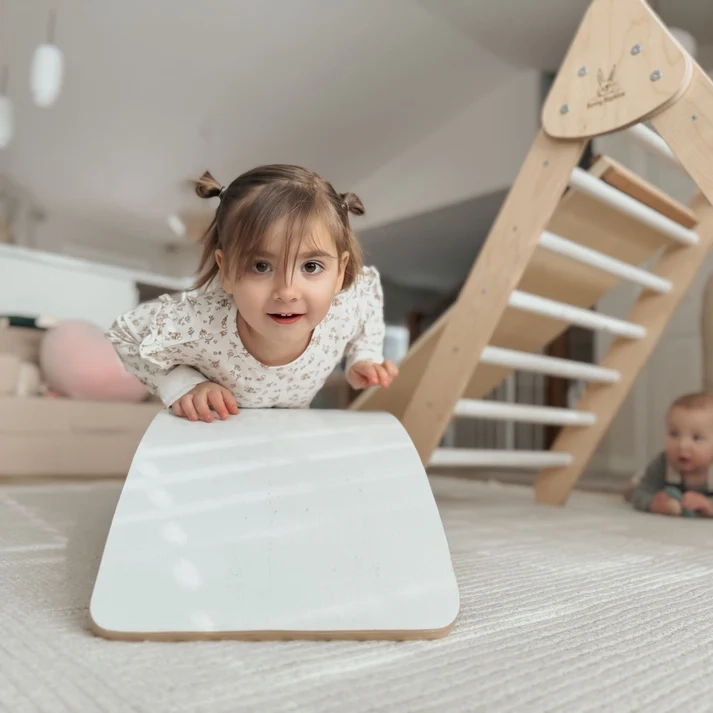
5.8 Expressive Activities
表現活動は、未就学児が身体を使って感情、考え、物語を伝えるのに役立ちます。これらの活動は、協調性やバランス感覚といった知覚運動能力を高め、感情表現や創造性を育みます。
表現活動の例
- ダンスと動き子どもたちが音楽に合わせて自由に体を動かし、喜び、興奮、悲しみなどの感情を動きを通して表現できるように促しましょう。ダンスは、 グラムoss motor skills and body awareness while allowing preschoolers to experiment with rhythm, timing, and coordination. You can add challenges like freeze dances or follow-the-leader movements to make it more interactive.
- ロールプレイングロールプレイングは、子どもたちが想像力と身体の動きを使って、様々なキャラクターになりきったり、様々なシナリオを演じたりする機会です。動物、スーパーヒーロー、あるいは普通の人など、ロールプレイを通して、子どもたちは様々な役割や感情を身体を使って表現することができます。こうした遊びを通して、子どもたちは役割に応じた動きや身振りをすることで、身体感覚、バランス感覚、そして細かい運動能力を育みます。
- パントマイムゲームこれらのゲームでは、子どもたちは言葉を使わずに、ボディランゲージだけで様々な感情や行動を表現することができます。例えば、「アイスクリームを食べる」や「山に登る」などのパントマイムを子どもに頼んでみましょう。これらのアクティビティは、子どもたちが創造的に体を使うことを助け、視覚運動知覚能力と空間認識能力を育みます。
これらの表現活動により、子供たちは感情や考えを探求しながら、楽しく創造的な方法で運動能力や知覚能力を発達させることができます。

Receive a free catalog and custom layout to help you design your ideal classroom easily.
6. Which Skill Is an Example of a Perceptual Motor Skill?
知覚運動能力とは、感覚入力と運動反応を統合し、協調を必要とする課題を遂行する能力です。これらの能力は、書くなどの学業からスポーツなどの身体活動まで、様々な活動に不可欠です。
6.1 Perceptual Motor Skills and Movement Concepts
知覚と運動能力が運動概念とどのように相互作用するかを理解することは、未就学児の発達を支援する鍵となります。これらの運動概念には、空間関係、方向、バランス、タイミングの理解が含まれており、これらはすべて、子どもたちが物理的環境を理解するのに役立ちます。
知覚と運動能力への影響係数
知覚運動能力の発達は、子どもが効果的に動き、物理的な世界を理解する能力に直接影響します。例えば、知覚運動能力が優れた未就学児は、感覚入力と運動行動の協調性を習得しているため、「前に走れ」や「ジャンプしろ」といった指示に容易に従えます。
知覚運動技能と運動概念の例
Some activities that incorporate perceptual motor skills and movement concepts include following complex directions in dance, moving through obstacle courses, or participating in group sports. These activities require children to adjust their movements based on sensory feedback, enhancing their perceptual motor coordination.

6.2 Developing Ocular Motor and Visual Perceptual Skills
Ocular motor and visual perceptual skills are essential for the eyes to track, focus, and interpret visual information. These skills support reading, writing, hand-eye coordination, and spatial awareness—core components of early learning. Strengthening them in preschoolers helps improve attention, visual memory, and the ability to recognize patterns or letters. Activities like tracing, mazes, and visual matching games effectively promote development. By focusing on these foundational visual motor and visual perceptual skills, children build the visual efficiency needed for academic and everyday success. Consistent practice boosts school readiness and enhances confidence in physical and classroom tasks.

7. Differences in Perceptual Motor Skill between Infants, Toddlers, and Preschoolers
| 側面 | Infants (0–12 months) | Toddlers (1–3 years) | Preschoolers (3–5 years) |
|---|---|---|---|
| 粗大運動能力 | Start walking, climbing, running, pushing, and pulling toys | Improve coordination in running, jumping, hopping, and balancing | Grasping objects, reaching, and hand-to-mouth movement |
| 細かい運動能力 | Scribbling, stacking blocks, and using spoons | Drawing shapes, using scissors, and completing puzzles | Respond to light, sound, and texture passively |
| Visual Motor Integration | Tracking faces/toys, recognizing contrast | Improved hand-eye coordination through simple play | Precise visual tracking and motor control for drawing/writing tasks |
| Sensory Processing | Can follow complex movement directions, and improved body control | Active exploration using all senses | Use sensory cues to guide purposeful movement |
| Body Awareness | Limited to spontaneous movement and reflexes | Understand body parts, mimic gestures | Can follow complex movement directions, and has improved body control |
| Spatial Awareness | Minimal; start recognizing caregivers’ distance | Begin navigating space, avoiding obstacles | Navigate environments confidently with improved spatial judgment |
| Directional Awareness | Absent; movement is reactive | Begin understanding in/out, up/down | Understand left/right, forward/backward in structured tasks |
| Motor Planning | Primitive; trial-and-error movement | Basic planning, trial strategies during play | Intentional actions with goal-directed movement |
よくある質問
1. 知覚運動能力とは簡単に言うと何ですか?
Perceptual motor skills involve interpreting sensory information and responding with coordinated physical movements. They are crucial for both cognitive development and physical tasks.
2. 未就学児の運動知覚能力を向上させるにはどうすればよいでしょうか?
知覚運動能力を向上させるために、絵を描く、走る、ジャンプする、ゲームをするなど、身体的な協調性と感覚処理を必要とする活動を奨励します。
3. 未就学児にとって知覚運動能力がなぜ必要なのでしょうか?
知覚運動能力は、学業、身体の健康、そして情緒の発達に不可欠です。子どもたちが書くこと、読むこと、そして社会活動に参加するといった課題を遂行するのに役立ちます。
4. 未就学児の知覚運動能力の例にはどのようなものがありますか?
Examples include running, jumping, drawing, catching a ball, and completing puzzles. These activities help preschoolers develop both visual motor and visual perceptual skills.
5. 子どもの知覚運動能力と運動概念の発達をどのようにサポートすればよいでしょうか?
ブロックで何かを作ったり、ボールゲームをしたり、障害物コースに参加したりするなど、感覚処理と身体運動の両方に挑戦するアクティビティを取り入れましょう。
6. 自宅で知覚運動能力プログラムを実施する最良の方法は何ですか?
知覚運動能力を高めるには、ダンス、ランニング、建築などの屋内および屋外の身体活動を含む構造化されたルーチンを作成します。.
結論:
Incorporating perceptual motor skills activities into a preschooler’s routine is essential for fostering well-rounded development. Activities like balance exercises, integration tasks, and expressive activities enhance physical coordination and improve cognitive abilities such as spatial awareness, body control, and emotional expression. Preschoolers strengthen fine and gross motor skills by engaging in diverse activities, boosting creativity and confidence. The more these activities are integrated into daily routines, the better children will develop the foundational skills for academic success, social interactions, and overall well-being. These early experiences play a key role in preparing children for more complex tasks as they grow.







